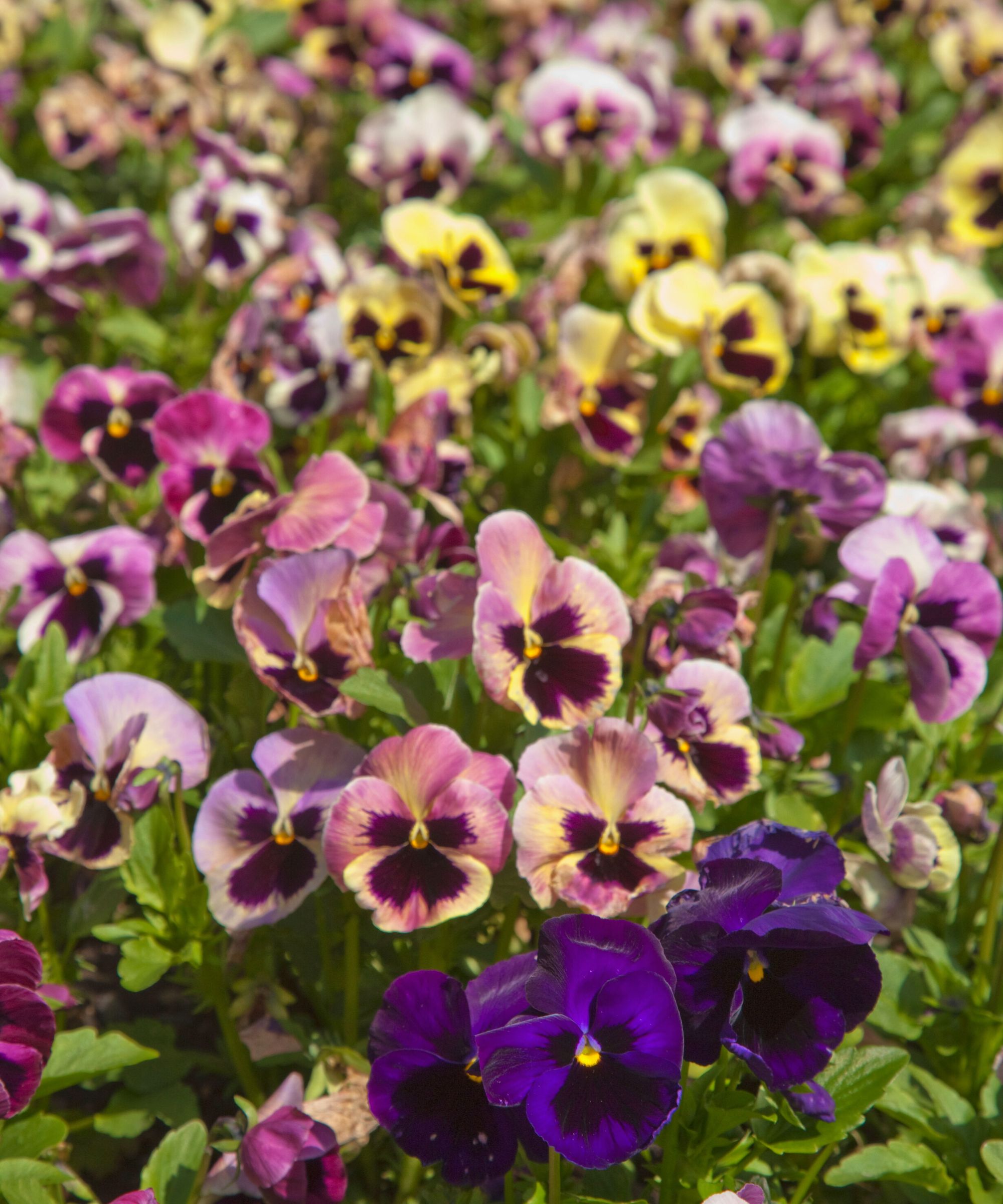How to deadhead pansies – for picture perfect containers
Experts explain how to deadhead pansies for more flowers and to prevent disease


Pansies are the perfect plant to liven up any backyard. Blooming throughout winter and spring, these perfect perennials are the ideal starter flower for many gardeners – although you may be asking how to create stronger and healthier pansy plants.
Looking after these plants does not end after learning how to grow pansies. These delicate-looking flowers are tough enough to last out winter in mild climates and will usually return in spring even in northern zones, however experts recommend deadheading pansies to encourage further growth and strengthen them so that they are more likely to provide blooms year after year. Learning when to plant pansies will ensure happy, showy blooms, too.
‘Pansies are a perennial plant, although we usually just treat them as an annual and throw them away once they have gone over. If you want to keep them once they have finished flowering, cut them back and place them somewhere out of the way until they start to flower again,’ explains Angela Slater, gardening expert at Hayes Garden World.
Below, garden experts offer their advice and explain why deadheading pansies is so important.
How to deadhead pansies

To deadhead pansies, pinch the stem of the pansy plant between your thumb and forefinger just below the dead flower and in front of the living leaves, and use your nails to gently snap off the dead bud. These can then be added to your compost bin.
Deadheading pansies only takes a few minutes and is well worth the colorful reward, especially as pansies are some of the best plants for hanging baskets as their almost excessive growth and cheery flowers can provide color even in the dreariest of months.
Deadheading pansies also allows them to expend their energy on growing new flowers and developing stronger roots and stems rather than produce seeds. The removal of old flowers prevents seed pods from growing, and the plant's energy is preserved.
Much like deadheading geraniums, deadheading pansies does not require tools. ‘Using your fingers to remove dead pansy blossoms is more exact than using pruners or clippers,’ explains Rachel Crow, Garden Editor for Homes & Gardens.
‘Unlike deadheading hydrangeas, clippers could damage the smaller, more delicate stems of the pansy plant, whereas pinching with your fingers is more precise.’
When to deadhead pansies?
Pansies reproduce flowers quickly but also die quickly too. It is important to deadhead pansies as soon as you see their petals start to droop and their color fade.
‘Deadheading must be carried out regularly.’ advises Angela Slater, gardening expert at Hayes Garden World. ‘Once they set seed, the flowering starts to diminish. Cut off the stem down to the next leaf joint once the petals have started to droop.’ It is a good idea to check your pansy plants every few days, skipping just a few days could result in more wilted flowers and seed pods than blooming petals.
‘Keep feeding with a weak solution of tomato fertilizer, such as Tomato!, every week to ensure they continue flowering over as long a period as possible,’ she adds.
Should you deadhead pansies?
You should deadhead pansies if you want to encourage repeat blooming. Do so regularly – every few days in growing season – to encourage healthy new growth. If you don't deadhead pansies you will end up with fewer blooms and a greater chance of disease.
How do you keep pansies flowering?
The best way to keep pansies flowering is to regularly deadhead them, removing dead or fading flowers. This will prompt the plant to keep producing fresh new blooms.
What happens if you do not deadhead pansies?
If you do not deadhead your pansies, there will be few serious effects however they are less likely to bloom for as long. With pansies being the ideal fall flowers for pots, brightening up backyards even when many other plants are dying back for the winter, deadheading them will result in a more colorful garden for longer.
In addition to producing extra blooms, deadheading pansies can also help to rid the plants of some diseases. Diseases such as botrytis blight cause flowers to rot and can spread in pansies during periods of wet weather. If you deadhead pansies with this disease, do not put these flowers on your compost heap but dispose of them in your regular waste bin.
Sign up to the Homes & Gardens newsletter
Design expertise in your inbox – from inspiring decorating ideas and beautiful celebrity homes to practical gardening advice and shopping round-ups.

Chiana has been at Homes & Gardens for two years and is our resident 'queen' of non-toxic living. She spends most of her time producing content for the Solved section of the website, helping readers get the most out of their homes through clever decluttering, cleaning, and tidying tips. She was named one of Fixr's top home improvement journalists in 2024.
-
 What is cozymaxxing and have you tried it yet? Here are 7 ways to embrace the trend and create an oasis of calm
What is cozymaxxing and have you tried it yet? Here are 7 ways to embrace the trend and create an oasis of calmExperts reveal how to take the cozymaxxing trend from social media into your home with color, texture, lighting and natural materials
By Emilia Hitching
-
 Mid-century modern bedroom ideas – 9 ways to channel this classic style with a current and contemporary feel
Mid-century modern bedroom ideas – 9 ways to channel this classic style with a current and contemporary feelThis timeless interior design style is defined by organic shapes, earthy neutrals, and a focus on functionality, qualities that make it a great choice for a bedroom
By Lilith Hudson